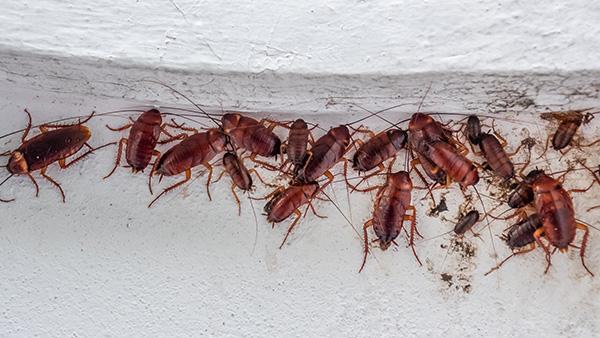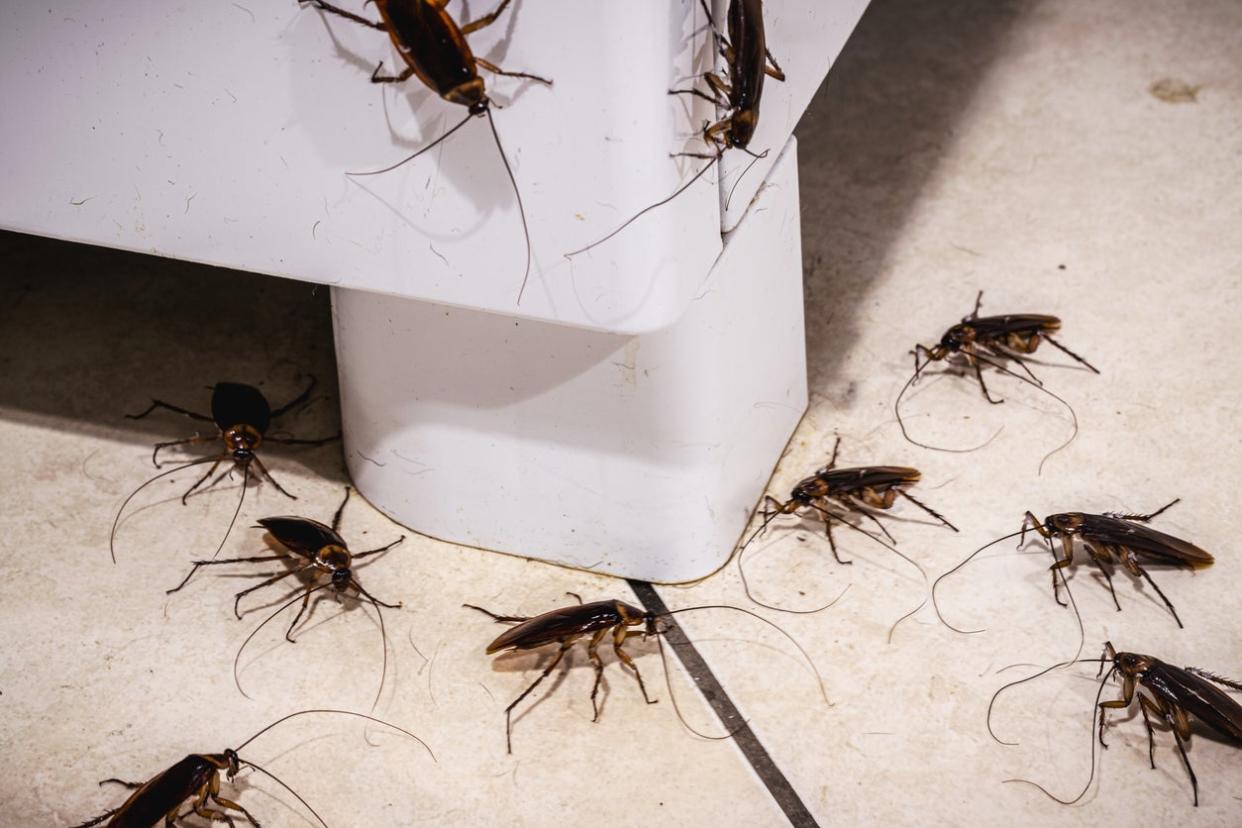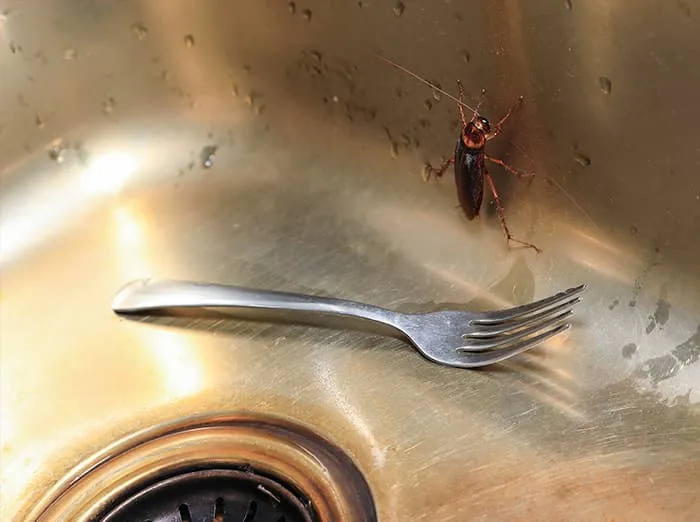Florida’s subtropical climate—defined by warm temperatures, high humidity, and short, mild winters—enables cockroaches to remain active and reproduce year-round. In a bustling metropolis like Miami—where residential areas, tourist locations, and businesses coexist—these resilient pests take advantage of abundant food, moisture, and entry points to establish themselves unnoticed. This service page explains why roaches flourish in Florida’s environment, the warning signs of an infestation, and why employing a professional cockroach exterminator is the most practical, effective solution for preserving a hygienic, roach-free space.
Whether you own a property in Miami or manage rentals or establishments in Miami Beach, Key Biscayne, Miami Gardens, or North Miami Beach, identifying roach activity early—and acting decisively—safeguards occupant health, protects y
Why Cockroaches Thrive in Florida
Mild Winters
Harsh winters in colder regions typically reduce roach numbers or halt breeding cycles. Florida’s mild cold season rarely dips below freezing, allowing roaches to stay active all year. Climate-controlled buildings, especially in places like Miami, remain comfortable indoors, removing any natural downtime that extreme cold might bring.
High Humidity and Moisture
Roaches depend on water sources to survive. Florida’s humidity, frequent rainfall, and irrigation-based landscaping supply ample dampness. Even small leaks under sinks or condensation around AC units can give cockroaches the moisture they need. Kitchens, bathrooms, or laundry areas become prime spots if occupant vigilance slips.
Abundant Food Supplies
From leftover crumbs to open pet kibble and loose trash lids, Florida’s dense neighborhoods and tourist areas invariably produce roach-attracting waste. Restaurants, grocery stores, or residential complexes around Miami see heightened food availability. Without sealing food scraps or storing dry goods properly, roaches can easily feed and multiply.
Rapid Reproduction
Roaches breed swiftly. A single female can carry multiple egg cases (oothecae), each containing numerous embryos ready to hatch within weeks. With no seasonal freeze to curtail breeding, a few roaches often become a colony of dozens or hundreds, especially if occupant or manager oversight remains minimal.
Multiple Cockroach Species
Several species dominate Florida’s ecosystem, each with unique preferences:
- German Cockroach: Smaller, reproduces quickly, commonly found near kitchens or bathrooms indoors.
- American Cockroach: Larger, sometimes referred to as “palmetto bugs,” often inhabiting warm, humid spaces like sewers or utility tunnels.
- Smoky Brown Cockroach: Prefers outdoors and moist habitats, occasionally wandering indoors for food.
- Brown-Banded Cockroach: Occupies drier, higher spaces like upper cabinets or behind electronics.
All can become a nuisance in enclosed spaces, thriving in Florida’s year-round suitable climate.

Telltale Signs of a Cockroach Infestation
- Live Roaches, Especially by Day
- Spotting roaches scurrying in daylight often signals a crowded colony forcing some into the open.
- Kitchens or bathrooms are typical areas to witness roaches when flipping lights on, especially near drains or behind appliances.
- Spotting roaches scurrying in daylight often signals a crowded colony forcing some into the open.
- Droppings and Smear Marks
- German roach droppings resemble black pepper, while American roach droppings are larger and cylindrical.
- In damp spots, roaches can leave brownish smears on floors, walls, or cabinet edges.
- German roach droppings resemble black pepper, while American roach droppings are larger and cylindrical.
- Egg Casings (Oothecae)
- Bean-shaped capsules hidden behind furniture, under sinks, or in dark corners.
- Each casing can produce multiple roach offspring, confirming active breeding.
- Bean-shaped capsules hidden behind furniture, under sinks, or in dark corners.
- Musty or Oily Odors
- Heavier infestations exude a distinctive, musty smell caused by pheromones and droppings.
- The more pungent the odor, the larger the population likely is.
- Heavier infestations exude a distinctive, musty smell caused by pheromones and droppings.
- Gnawing or Damage to Food Packaging
- Roaches will nibble on boxes, paper, or thin plastic packaging, leaving ragged holes.
- Spilled or partially eaten food scraps might appear in pantries or storage areas.
- Roaches will nibble on boxes, paper, or thin plastic packaging, leaving ragged holes.
- Complaints from Occupants
- In multi-unit buildings—like apartments in North Miami Beach—or restaurants in Miami Gardens, occupant or customer sightings confirm a building-wide spread if left untreated.
- In multi-unit buildings—like apartments in North Miami Beach—or restaurants in Miami Gardens, occupant or customer sightings confirm a building-wide spread if left untreated.
Risks of Ignoring Cockroaches
Disease and Bacterial Transmission
Roaches crawl through contaminated sites (sewers, dumpsters) and carry pathogens like E. coli or salmonella on their legs and bodies. When traversing countertops or stored food, they deposit these bacteria, posing health hazards for occupants or dining patrons.
Allergen and Asthma Triggers
Cockroach feces, saliva, and shed skins contain allergens that may worsen asthma, especially in children. Untreated infestations raise indoor allergen levels, exacerbating respiratory issues.
Rapid Colony Growth
A small roach presence quickly expands, thanks to multiple egg sacs. New roaches reach maturity fast under Florida’s climate. Overlooking the initial signs typically leads to larger, more entrenched infestations that demand extensive measures.
Structural or Material Damage
Roaches have less destructive tendencies than rodents, but they still soil packaging, books, or paper products with droppings and secretions. Over time, these contaminations reduce the usability or cleanliness of stored goods.
Health and Reputational Concerns
For businesses—particularly those in food service or hospitality—roach sightings can incite negative customer reviews, possible health code penalties, or brand damage. Homeowners face stress, embarrassment, and potential devaluation of property if roaches overrun living areas.
Why a Professional Cockroach Exterminator Is Essential
Targeted Infestation Analysis
A cockroach exterminator investigates behind appliances, under sinks, or along corners for droppings, egg casings, or smear marks. Confirming species (German, American, etc.) shapes whether kitchen-based baiting or perimeter spraying is prioritized.
Strategic Baiting and Spraying
Exterminators employ gel baits or bait stations in roach travel corridors—cabinets, under stoves—luring roaches to consume poison and spread it within their colony. Residual insecticides placed in cracks or crevices kill roaches crossing treated areas. This synergy can outmatch random do-it-yourself sprays lacking precise application.
Insect Growth Regulators (IGRs)
IGRs inhibit roach nymphs from reaching reproductive age, shrinking future populations. Paired with adulticidal baits, IGRs disrupt the roach cycle effectively, ensuring newly hatched roaches can’t bolster colony numbers.
Reduced Chemical Exposure
DIY solutions often oversaturate living spaces with harsh sprays. Professionals apply regulated insecticides carefully, focusing on roach harborages behind cabinets or near plumbing lines. This method kills roaches without needlessly contaminating occupant areas.
Follow-Up and Long-Term Solutions
Because roach eggs can hatch weeks after initial kills, many exterminators re-check occupant sightings or reapply baits if droppings reappear. Occupant advice—like proper food storage or sealing cracks—closes the loop on a more durable roach-free result.

Typical Methods for Cockroach Treatments
- Inspection and Roach Type Identification
- Specialists inspect kitchens, bathrooms, laundry rooms, or behind large appliances.
- Recognizing whether roaches are German, American, smoky brown, or brown-banded clarifies the optimal products and strategy.
- Specialists inspect kitchens, bathrooms, laundry rooms, or behind large appliances.
- Gel Baits and Stations
- Applied in corners, under sinks, or behind stoves, slow-acting gel baits ensure roaches bring toxin back to nesting spots.
- Bait stations are often used in more open areas, keeping children or pets from tampering with the poison.
- Applied in corners, under sinks, or behind stoves, slow-acting gel baits ensure roaches bring toxin back to nesting spots.
- Residual Sprays
- Technicians treat cracks, baseboard edges, and other roach routes with insecticides that kill on contact or via residual exposure.
- Some incorporate IGRs to block roach reproduction.
- Technicians treat cracks, baseboard edges, and other roach routes with insecticides that kill on contact or via residual exposure.
- Dusts for Wall Voids
- Boric acid or silica dusts puffed into wall cavities or behind built-ins remain lethal for roaches crossing them.
- Effective in hidden spots where liquid sprays can’t reach, restricting occupant exposure.
- Boric acid or silica dusts puffed into wall cavities or behind built-ins remain lethal for roaches crossing them.
- Exclusion and Repairs
- Professionals often advise sealing holes around plumbing lines, installing door sweeps, or caulking cracks.
- Removing accessible water leaks or leftover food drastically diminishes roach survival odds.
- Professionals often advise sealing holes around plumbing lines, installing door sweeps, or caulking cracks.
- Sanitation and Clutter Reduction
- Occupants must store foods in airtight containers, promptly clean spills, and keep trash bins sealed.
- Clearing clutter denies roaches potential hiding spots or nesting zones.
- Occupants must store foods in airtight containers, promptly clean spills, and keep trash bins sealed.
- Scheduled Follow-Up
- A few weeks post-treatment, occupant feedback or re-checks confirm droppings vanish and roach sightings cease.
- If roaches remain active, additional baits or insecticides refine total elimination.
- A few weeks post-treatment, occupant feedback or re-checks confirm droppings vanish and roach sightings cease.
Service Areas: Miami, Miami Beach, Key Biscayne, Miami Gardens, North Miami Beach
Cockroaches adapt to all manner of warm, damp settings. This page specifically addresses solutions for Miami, Florida’s global city mixing tourism, diverse cultures, and robust commerce. Our cockroach exterminator services also extend to:
- Miami Beach: Tourist-driven area with hotels, restaurants, and condos frequently exchanging occupant traffic or supplies, inadvertently ferrying roaches if sanitation slips.
- Key Biscayne: An island community, not immune to roach infiltration in coastal properties, especially if leftover food or open trash attract them.
- Miami Gardens: Dense neighborhoods and multi-family housing can face roach spreads between adjoining walls if occupant or management oversight falters.
- North Miami Beach: Blends older and newer homes or buildings, each susceptible if occupant vigilance around water leaks or leftover food remains weak.
No matter the locale, Florida’s mild winters and occupant patterns keep roaches breeding all year. Occupant diligence plus professional extermination remain key to blocking or eradicating roach colonies effectively.

Why Choose Us
Florida-Specific Expertise
We adapt proven roach treatments—gel baits, residual sprays, IGR usage—to Miami’s year-round warmth and occupant habits, reinforcing occupant housekeeping with well-placed chemicals. By merging occupant-led sanitation and advanced extermination, we deliver strong, enduring roach control.
Comprehensive Examinations
Our technicians inspect plumbing areas, behind appliances, in corners, or near drains where roaches gather. Species identification (German vs. American) decides whether to emphasize kitchens/bathrooms or building exteriors. We then tailor solutions for minimal occupant disruption.
Safe and Strategic Products
We concentrate insecticide or dust applications in roach hiding spots rather than broad open floor areas. Gel baits carefully placed out of reach of children or pets ensure lethal roach kills without contaminating occupant living spaces or risking health hazards.
Preventive Guidance
Beyond initial kills, occupant changes—like sealing leftover food, discarding unsealed waste, or fixing leaks—stop roaches from re-establishing. Our synergy of occupant housekeeping plus professional roach elimination yields longer-lasting success in Florida’s roach-friendly environment.
Follow-Up and Assurance
Because egg casings may hatch weeks after initial steps, re-check or occupant calls verify any newly emerged roaches also face lethal conditions. Additional treatments or occupant reminders finalize a roach-free setting, guaranteeing occupant relief.
Next Steps
Seeing roaches scurry in your kitchen, discovering droppings under the sink, or worried about eggs in damp closets? Contact us to learn more or schedule your service. Our cockroach treatments in Miami, Miami Beach, Key Biscayne, Miami Gardens, and North Miami Beach combine detailed inspections, carefully placed baits or sprays, occupant-friendly sealing and sanitation advice, plus vigilant follow-ups—rapidly eradicating roaches while blocking their return.
Taking swift action prevents larger colonies, occupant distress, and contamination threats. With our Florida-centric exterminator knowledge, you can rely on targeted, safe, and effective roach removal, sustaining a cleaner, healthier environment for family, customers, or tenants in the Sunshine State’s mild conditions.
Maintaining a Roach-Free Environment
Once roaches are removed, occupant diligence ensures they can’t re-infiltrate:
- Secure Food Sources
- Keep cereals, grains, or pet food in airtight containers—roaches easily chew through cardboard.
- Clean countertops, sweep floors, and promptly remove or wash dishes to eliminate crumbs.
- Keep cereals, grains, or pet food in airtight containers—roaches easily chew through cardboard.
- Limit Moisture
- Repair leaky faucets, drains, or AC lines that create puddles or damp zones.
- Vent damp spaces (bathrooms, laundry rooms) to keep humidity low.
- Repair leaky faucets, drains, or AC lines that create puddles or damp zones.
- Trash Management
- Use bins with sealed lids, disposing of garbage regularly.
- Rinse recyclables to remove residue that might attract roaches.
- Use bins with sealed lids, disposing of garbage regularly.
- Eliminate Clutter
- Stacks of newspapers, cardboard boxes, or random junk can hide roach activity.
- Storing items in transparent bins helps you spot droppings or chew marks early.
- Stacks of newspapers, cardboard boxes, or random junk can hide roach activity.
- Seal Cracks and Gaps
- Caulk or weatherstrip around windows, doors, or utility penetrations.
- Fewer accessible entry points limit roaches’ ability to sneak inside from yard edges or adjacent units.
- Caulk or weatherstrip around windows, doors, or utility penetrations.
- Monitor Pet Food
- Feed pets on a set schedule; remove leftover kibble instead of leaving bowls out overnight.
- Store extra food in sturdy plastic or metal containers off the ground.
- Feed pets on a set schedule; remove leftover kibble instead of leaving bowls out overnight.
- Periodic Checkups
- If occupant sightings persist or droppings reappear, contact an exterminator for re-checks or additional baits.
- Early interventions stop minor re-infestations from mushrooming into bigger problems.
- If occupant sightings persist or droppings reappear, contact an exterminator for re-checks or additional baits.
By combining occupant-driven housekeeping, effective sealing, and swift professional roach treatments when necessary, property owners throughout Miami and its neighboring communities maintain roach-free living or working spaces. Despite Florida’s mild winters sustaining roaches year-round, your consistent efforts plus specialized extermination keep them from taking root in kitchens, bathrooms, or behind walls—ensuring a healthier environment for everyone on the property.
